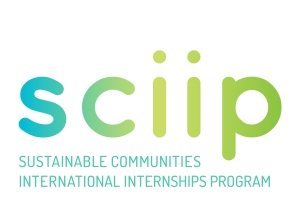The first Saturday that Tatiana and I arrived to Guadalajara, we got an update from our supervisor at IMEPLAN indicating that there was a community public hearing (“espacio barrial”) at the “Parque Agroecológico” in Zapopan. Although, too short of notice and disoriented in the city, we couldn’t attend. That following week, when we spoke with our supervisors about our work plans and introduced our Seedfund project potentials, the talk of the park came up again. This utopia of a park continued to embed itself in various conversations when we brought up agricultural project ideas and Seedfund project ideas. It seemed as if we had missed our chance to visit this beautiful park everyone talked about.
It wasn’t until Tatiana began developing her SeedFund project and green belt project for IMEPLAN, that she connected with Cesar, the director of the park, and the park was brought to my attention once again. Before we knew it, the following Saturday we got invited to plant trees and have a potluck at the park.
That whole week, I had scheduled in tree planting at the park and prioritized this event, even re scheduled a visit to Mexico City, in order to plant trees at the infamous Parque Agroecológico de Zapopan. With the intention of meeting Cesar, to inquire about how the park works and for him and Tatiana to connect on project ideas, planting was still at the back of my mind. The meeting consisted of Tatiana introducing him to her project idea and Cesar introducing us to the importance of the park, meanwhile I planted with a group of fellow volunteers, including three year old Maya alongside.
The point of this post, isn’t about my fascination with gardening, but more about what this park is contributing to the community and how other projects can be inspired by this park. This once abandoned dumpster, now offers a place for neighbours to create a community in a public space where urban agriculture can be adopted. Gardening workshops, composting workshops, and lessons from the field are offered. As well, recreation activities, such as tai chi, scouts, and ecological workshops, are incorporated into the park’s community building scheme.
Much work has been implemented into the parks construction, such as the nursery, orchard, “dry” bathrooms, and rainwater catchment and recycling technologies. With the help of volunteers, the park can continue to be self-sustainable. However, not only is the park an ecosystem service and perfect example of how sustainability in a community can be created and maintained but also, it is a gateway to community building and a place where citizens can begin to learn how to work with one another.
This park is truly blissful and with the help of Cesar, Tatiana, IMEPLAN, and citizens of
Guadalajara, many more projects can be inspired to recreate what the Parque Agroecologico de Zapopan has managed to generate. And continue teaching and inspiring little ones, like Maya, to develop a sustainable future.



